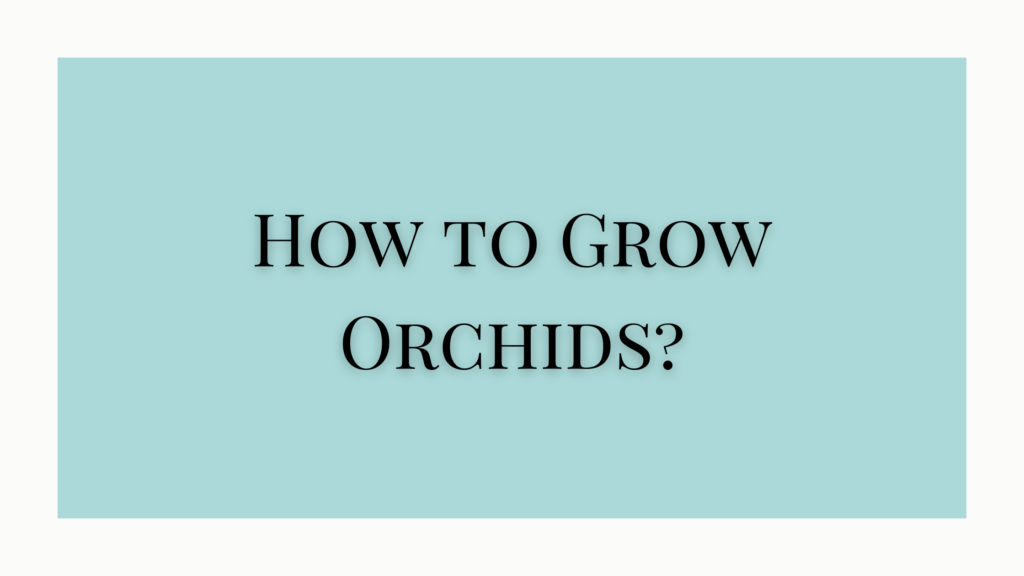Orchid flowers are very attractive, colorful, and long-lasting among flowering plants. Flowers of Grammetophyllum multiforum last up to 9 months. Orchid flowers offer great variation in their size, shape, and color. Most orchids are perennial herbs and are epiphytic, terrestrial, or saprophytic.
How to Grow Orchids
Plenty of orchid varieties are now grown and maintained at various institutions in India such as TBGRI (tropical Botanical Garden & Research Institute) at Palode, Botanical Survey of India, etc.
- Epiphytic orchids: Dendrobium, Vanda, Bulbophyllum, Cympidium, Cattleya.
- Terrestrial orchids: Orchis, Spathoglottis, Epipogon, Vanilla, Vanda sps, Cattleya, etc.
- Saprophytic orchids: Neottia (bird’s nest orchid)
- The simplest method of propagating orchids is to divide the rhizomes.
- In Bulbophyllum, stem cuttings or long pseudobulbs can all be used.
- Dendrobium produces small plantlets or offsets from the nodes or flower stocks. These plantlets are cut off and potted.
Potting Mixture for Orchids
The preferred potting mixture for orchids must have large pieces of charcoal, thermocol, brick pieces, and fern roots in equal parts. Since thermocol and charcoal are inert substances, it is important to supply nutrients regularly.
Peat is commonly used in potting media. Most orchids are sensitive to salt and lime. So, soft water and rainwater are good for their growth.
Certain orchids such as Vanda can be raised in hanging baskets filled with charcoal pieces. Terrestrial orchids grow in ordinary earthen pots of 15-20cm diameter, with a suitable soil mixture containing compost, leaf mold, garden soil river sand, and charcoal in equal proportions.
The epiphytic types of orchids with their clinging roots should be tied to the trunk of a tree using a binding wire. A skinny layer of fern root and dried moss can be spread over to help retain moisture. Earthen pots with perforations along the sides can be used for planting orchids.
Manuring
Orchid flowers use a complete fertilizer mixture containing nitrogen, phosphorous, and potassium in varying proportions to suit the specific needs of their time of growth or season. For eg, in summer, more nitrogen is needed. Readymade commercial fertilizer mixtures are available in the market.
Seed Propagation of Orchids
Orchid seeds require special treatment under sterile conditions before they develop into a new plant. Naturally, the germination of orchid seeds is conditioned by a symbiotic partnership with mycorrhiza which provides nutrients for the seedling. In return, they derive sugar and amino acids from orchids.
Artificial germination of tiny orchid seeds is a complicated procedure and the most commonly used medium for this is the Knudsens culture medium. After a few months of incubation under low light intensity and cool temperature, the delicate seedlings from cultured flasks can be transplanted to shallow ditches.
These tiny seedlings should be given fungicidal root tip treatment. Growing seedlings can be potted individually in small pots and when they have sufficiently established, they should be transferred to their permanent pots of 15-20 cm.
Orchid pants have three distinct growth stages- growing, flowering, and dormant stages. For a successful culture, a small greenhouse is needed which will soften the rays of midday sin. The compost potting, watering, soil type, etc vary with each genus.
For eg. In epiphytic orchids, rhizomes are kept slightly above the rim of the pot to avoid rot and decay. For terrestrial plants, the base of the plant is planted about one inch below the rim of the pot.
The best time to pot the epiphytes is when new roots begin to appear and they are about an inch long. For terrestrial orchids such as Calanthe, potting is done in February.
Conclusion
In addition to the cultivation methods, proper lighting is also crucial for growing orchids. Depending upon the chosen variety, the light requirements may vary from low to high. Some varieties require more light than other types. On average, most orchids need 12 hours of light. At the same time, the humidity level around the growing area is also crucial. humidity should be higher for orchid plants.




